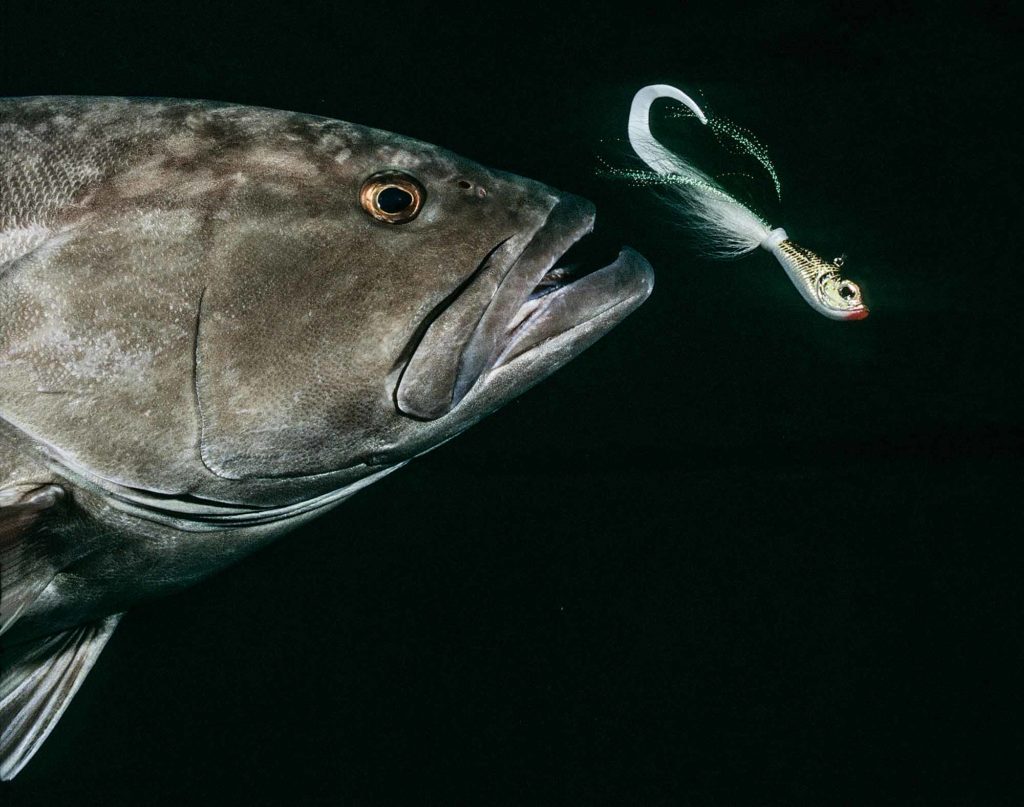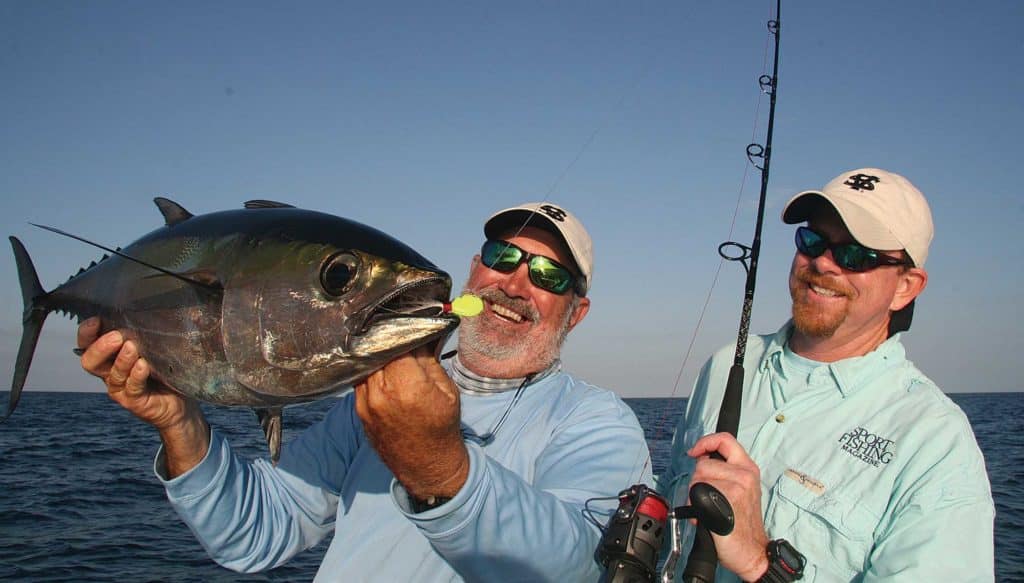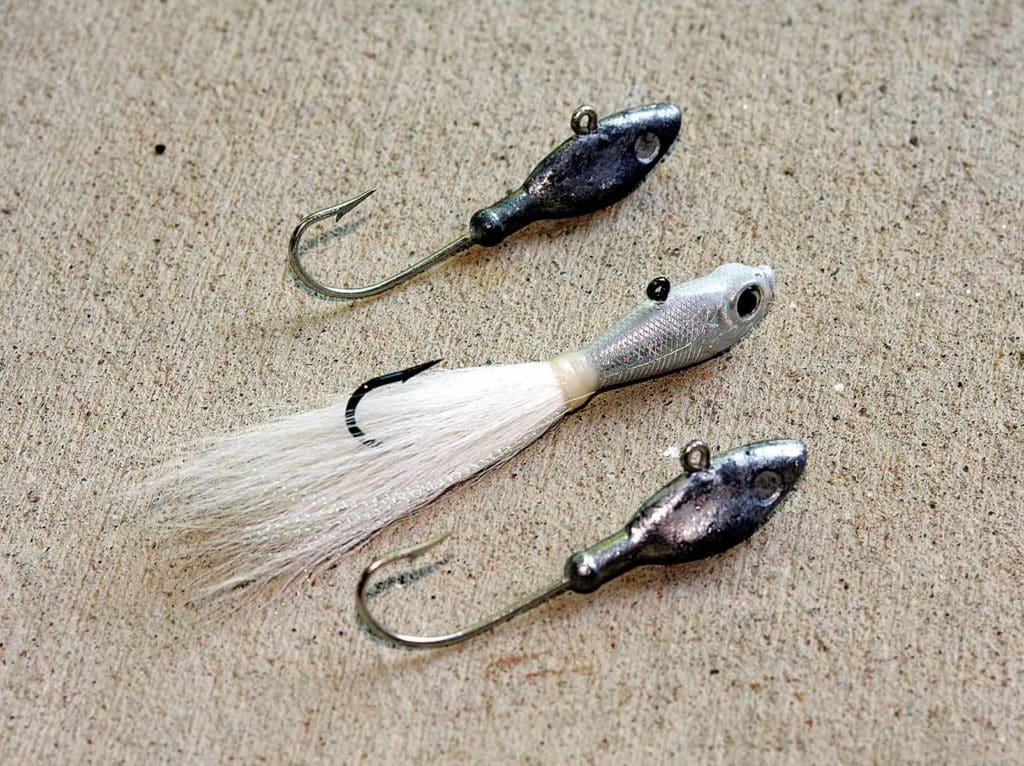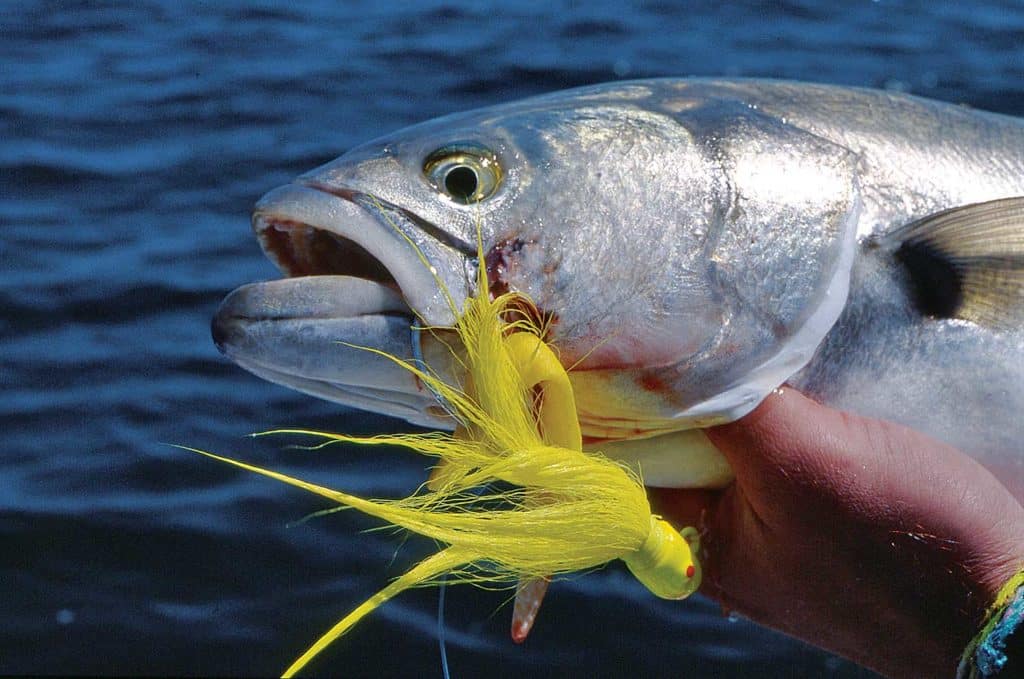
The latest fishing report said so, right there in print: The hot lure du jour was a white bucktail.
This seemed rather hard to believe. Haven’t bucktails been obsolete for decades? If these specks and stripers would hit a white bucktail, wouldn’t they go after a white plastic shad with just as much enthusiasm?
Fast-forward a few days: I’m casting to the points and guts of the marsh islands of Tangier Sound in the Chesapeake Bay, with my go-to plastic on the end of the line. Despite the light breeze, promising current and good reports of late, I’m drawing a blank. Then I remember: white bucktails.

Bucktail Voodoo
Of course I have a few bucktails in my tackle box — most anglers probably do — so I find one not too ancient and rusted, tie it on the end of my line, thread a plastic twister onto the hook to give it some added appeal and start casting. Wham! A 22-inch trout slams the lure. Boom! Now a striper is on the line.
What gives?
It couldn’t be that they’re really showing such a drastic preference for this amalgamation of deer fur and lead, right? Just to prove it to myself, I switch back to the plastic shad. No bites.
While I have no idea why the fish so clearly preferred bucktails on that day, the fact remains that the tried-and-true jig proved to be the hottest lure in that area for a month straight. Whether it had to do with profile, the action provided by hairs that fluff out when jigged or the thin profile bucktails present while moving forward through the water, those simple lures best mimicked what the fish wanted to eat.
Although bucktails are ancient in nature and rarely the first choice for a modern angler, there’s no denying that they still have their moments. And a bucktail enjoys many advantages over other lures: It can be cast, trolled or jigged with equal effectiveness. It can be dressed with an eye-catching tail that also provides color contrast. It can create a ton of movement from vigorous rod-tip action or be left to cruise through the water at a steady, mellow pace. It can be tipped with bait, either live or cut.
Bucktails may be old, but they’re certainly not obsolete or one-dimensional.

Timeless Temptation
To get the inside scoop on why bucktails can be so effective, I spoke with a captain who has probably caught more fish on a bucktail than any other person alive: Ed Darwin, of Becky D Fishing Charters in Annapolis, Maryland. Darwin has been trolling, casting and jigging bucktails with his charter parties for 58 consecutive years, and believes them to be among the most versatile lures ever developed.
“When it comes down to brass tacks, bucktails catch just about any species of fish when nothing else works,” he says. “But the small factors, the details, they count. Sometimes plain white is best, but a bucktail with a bit of red or yellow, that can make the difference. Other times the shape of the head, the size of the eyes — it’s surprising, but sometimes things like that matter.
“One of the best things about bucktails is that you can change them. Add a strip of split pork rind to give it more action, or add some color.”
While you might expect an old-timer to favor bucktails, don’t be surprised to find young guns who are hip to their value too. “Depending on where I’m fishing and what I’m fishing for, bucktails are not usually my go-to bait,” says Capt. Tyler Nonn, of Tidewater Charters, who guides out of the Chesapeake as well as the Florida Keys. “But I still go through a bucket of ’em every year.”
Guiding since 2009, Nonn has made a name for himself traveling up and down the East Coast from Big Pine Key, Florida, to Cape Charles, Virginia, especially for working the cobia bite in Virginia — which is one of the species he often targets with bucktails.
“I like using them for cobia and also especially grouper in the Keys,” he says, “because I can add a live bait like a pilchard to a bucktail.” Nonn also says he likes bucktails when he’s surrounded by lure-destroying blues because the festooned lead-heads hold up better than most straight plastics.

Get Dressed
Both Darwin and Nonn agree on the importance of dressing bucktails, as appropriate, for different kinds of fishing. Reflecting their individual levels of modernity, Darwin prefers adding pork rind and Nonn favors tipping his ’tails with plastics. “I almost always add a plastic tail to a bucktail,” he says. “Even when those bluefish are chewing them up.”
Again, thanks to the bucktail’s versatility, the choices are virtually limitless when it comes to what you choose for dressing. The style of tail, however, makes a big difference. Twister and paddle tails provide built-in action, as does pork rind, while most straight tails do not. This is especially important to keep in mind when handing a rod off to a newbie, who might not know how to provide the ideal jiggle and twitch.
Bucktailing sharpies also keep color contrast in mind because adding a trailer provides the opportunity to present multiple colors with the same bait. As a rule of thumb, more contrast is better, though that’s not always the case.
Again, this gives bucktails an added advantage over many other lures because you can quickly and easily swap out different color trailers until you find what works. Eventually, you’ll dial in the right combination to entice those finned critters to strike with abandon — no matter how simple or old-fashioned the bait might seem.
Read Next: Top Saltwater Jig Heads
Bucktailing Tips
How do the pros get the most out of their bucktails? I asked Capt. Ed Darwin and Capt. Tyler Nonn to share some of their top bucktailing tips.
•Speed and depth are the keys to presentation. The two factors go hand in hand sometimes, but you might need to vary one without changing the other. Instead of speeding up the boat to get a bucktail running higher when trolling, for example, consider shortening the lines. Or when a slow retrieve is working best in shallow water but going slow would mean hooking bottom, switch to a lighter bucktail so you can maintain that presentation.
•Remember that a bucktail in and of itself has very little action. You need to either provide it yourself by giving it hard yanks or adding a trailer that has some wiggle.
•For many species, you’ll want to keep your bucktail close to the bottom and/or bounce it off the bottom. On windy days, this may mean using oversize heads, and you shouldn’t hesitate to up-size if you’re having trouble feeling bottom.
•Bucktails aren’t the most realistic-looking lures in the world, so don’t give fish a ton of time to look at them. If you’re being followed but not hit, speeding up usually works better than slowing down. When trolling, sweep or pump the rod to add a darting motion.
•Fish bucktails on braided line. It gives you more control over the lure, you’ll detect hits faster and your odds of a positive hook-set will increase.








